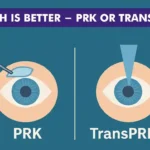Understanding Squint and Eye Alignment
Squint, or strabismus, is a condition where the eyes do not align properly. This misalignment can affect vision, depth perception, and overall eye coordination. It can be congenital or develop due to various factors, including muscle imbalances, nerve conditions, or uncorrected refractive errors. Proper eye alignment is crucial for clear and comfortable vision. In some cases, targeted exercises can help strengthen eye muscles and improve coordination, reducing the need for invasive treatments.
Strabismus can manifest in different ways, such as esotropia (inward turning of the eyes), exotropia (outward turning), hypertropia (one eye higher than the other), or hypotropia (one eye lower than the other). Depending on the severity and cause of the condition, treatment options vary from corrective lenses and patching to vision therapy and surgical interventions. Eye exercises play a significant role in improving muscle control, particularly in mild to moderate cases of squint.
Evolution of LASIK in Vision Correction
LASIK (Laser-Assisted In Situ Keratomileusis) has played a transformative role in vision correction. Initially developed as an alternative to glasses and contact lenses, LASIK surgery has undergone multiple advancements, making it one of the most common procedures for correcting refractive errors such as myopia, hypermetropia, and astigmatism. The procedure reshapes the cornea using a laser, allowing light to focus correctly on the retina for improved vision.
Refractive Error in Squint
Refractive error is not just a coexisting issue- it can be a direct cause of certain types of strabismus, i.e., squint, particularly in children. When the eye has a significant uncorrected refractive error, such as hypermetropia (farsightedness), the brain forces the eyes to accommodate (focus harder) to see clearly. This excessive focusing effort can cause one eye to turn inward, leading to a condition called accommodative esotropia, a common type of squint triggered by uncorrected refractive errors.
In essence, the eye’s attempt to sharpen blurry vision leads to eye muscle imbalance as a secondary effect. Hence, in many cases, simply prescribing corrective lenses can realign the eyes by relieving the strain of over-accommodation. However, when the squint is only partially accommodative or non-accommodative, additional interventions such as vision therapy or surgery may be necessary.
Understanding that refractive error can be the root cause of squint is critical in treatment planning because correcting the vision first often reduces or completely resolves the muscle misalignment. Patients with strabismus often require alternative or additional treatments, such as squint eye exercises, to improve binocular vision and muscle coordination.
Role of Squint Eye Exercises
Squint eye exercises play a valuable role in strengthening the eye muscles and improving coordination, particularly in individuals with mild to moderate strabismus. These exercises are often recommended as a non-invasive way to enhance binocular vision, reduce eye strain, and support overall visual function. However, in many cases, squint is not just about muscle imbalance- it can also be linked to uncorrected refractive errors.
When squint is caused by a refractive error, correcting the error becomes the first line of treatment. In these cases, the squint doesn’t originate from weak eye muscles alone, but rather from the strain caused by constant focusing efforts. Children are especially prone to this, as their visual system is still developing. In such cases, squint eye exercises are used in conjunction with glasses to support muscle control and maintain proper alignment.
Thus, while eye exercises can help train and strengthen the eye muscles, addressing any underlying refractive error is a crucial first step in managing squint effectively. A combined approach that includes vision correction and targeted muscle exercises often yields the best results in improving eye alignment and visual comfort.
Squint eye exercises are designed to strengthen eye muscles, enhance coordination, and improve binocular vision. These exercises can be beneficial for individuals with mild to moderate squint, as they promote better focus and alignment without surgical intervention. By consistently practising these exercises, individuals may experience enhanced eye control, reduced strain, and improved visual function.
Some key benefits of squint eye exercises include:
- Enhanced Eye Muscle Strength: Regular exercises help train the muscles responsible for eye movement.
- Improved Depth Perception: Coordinated eye movements contribute to better spatial awareness.
- Reduced Dependence on Corrective Measures: While glasses or surgery may still be required, exercises can complement these treatments.
- Non-Invasive Approach: Exercises provide a natural way to manage squint without the need for surgical intervention.
Common Strabismus Treatment Exercises
Strabismus treatment exercises focus on improving eye control, muscle balance, and coordination. Some of the most effective exercises include:
Pencil Push-ups
This simple yet effective exercise helps strengthen convergence by training the eyes to focus on a single point.
How to Perform:
- Hold a pencil at arm’s length and focus on its tip.
- Slowly bring the pencil closer to the nose while maintaining a single image.
- Stop if the image doubles and repeat the process several times a day.
Brock String Exercise
This exercise improves depth perception and binocular vision.
How to Perform:
- Attach a string to a stationary object and place colored beads at intervals.
- Hold the other end of the string at your nose.
- Focus on each bead in sequence, ensuring that both eyes align properly.
Eye Patching
Covering the stronger eye forces the weaker eye to work harder, gradually improving the use of the weaker eye and helping restore binocular balance.
How to Perform:
- Wear an eye patch over the dominant eye for a few hours each day.
- Engage in daily tasks that require visual focus, such as reading or writing.
Barrel Card Exercise
This exercise trains the eye muscles to work together by focusing on a set of gradually increasing images.
How to Perform:
- Hold a card with barrel-shaped images in front of you.
- Focus on the images and try to merge them into one.
- Repeat several times a day to strengthen visual alignment.
Eye Alignment Exercises for Better Vision
Eye alignment exercises are specifically designed to improve coordination between both eyes. Some of these include:
Tracking Movements
Moving the eyes in different directions without turning the head strengthens control over eye movements.
How to Perform:
- Follow a moving object (such as a finger or a pen) with your eyes.
- Move the object left, right, up, and down while keeping your head still.
Focus Shifting
This exercise improves the ability to switch focus between near and far objects.
How to Perform:
- Hold a book close to your face and read a few lines.
- Shift your gaze to a distant object and focus for a few seconds.
- Repeat several times to enhance adaptability.
Fusion Exercises
Using visual stimuli that merge into one image encourages both eyes to work together.
How to Perform:
- Look at a stereogram or 3D image designed for eye exercises.
- Adjust focus until both eyes perceive a single, clear image.
LASIK vs. Eye Alignment Exercises: A Balanced Approach
While LASIK is highly effective in correcting refractive errors, it does not address muscle-related eye alignment issues. A balanced approach includes:
- For Refractive Errors: LASIK remains a reliable option.
- For Eye Muscle Imbalances: Exercises play a crucial role in improving alignment.
- For Comprehensive Vision Health: A combination of vision therapy, corrective lenses, and possible surgical interventions may be necessary.
When to Seek Professional Help?
It is important to consult an eye specialist if:
- The squint is severe or worsening.
- Vision problems persist despite exercises.
- There is significant eye strain or discomfort.
- Additional treatments, such as prisms or surgery, may be required.
- Children under 6 with any signs of squint should be evaluated immediately to prevent amblyopia (lazy eye).
Squint eye exercises provide a non-invasive method to improve eye coordination and alignment. While they do not replace medical interventions in severe cases, they can be an effective supplement for individuals with mild to moderate squint. Combining these exercises with other treatments can contribute to improved visual function and comfort.
Start improving your eye coordination today with structured eye exercises. Schedule a Consultation!
FAQs
Squint eyes, or strabismus, is a condition where the eyes do not properly align with each other when looking at an object.
Squint eyes can be classified into different types, including esotropia (inward turning), exotropia (outward turning), hypertropia (upward turning), and hypotropia (downward turning).
In some cases, particularly mild ones, eye exercises can help improve alignment.
Consult an eye specialist for a proper diagnosis and treatment plan, which may include exercises, glasses, or other therapies.
Frequency depends on the specific exercise program prescribed by an eye specialist, typically ranging from daily to several times a week.
Common symptoms include misaligned eyes, double vision, eye strain, headaches, and difficulty with depth perception.
Exercises can help improve alignment in mild cases, but severe squint may require additional treatments such as glasses or surgery. Early diagnosis and consistent practice enhance the chances of significant improvement.
Consistency is key. Most individuals see improvement after a few months of regular practice. However, results may vary depending on the severity of the squint and adherence to the exercise routine.
There are no significant risks, but improper technique may lead to strain. Consulting an eye specialist before starting is advisable. Supervision ensures the exercises are done correctly and safely, especially for children.
LASIK corrects refractive errors but does not address muscle-related alignment issues. Eye exercises or other treatments may be needed for squint correction. It’s important to differentiate between vision clarity and eye alignment when considering LASIK.
Children and adults can benefit from eye exercises. Early intervention in children often leads to better outcomes. The brain’s adaptability in younger patients makes early treatment more effective in many cases.





